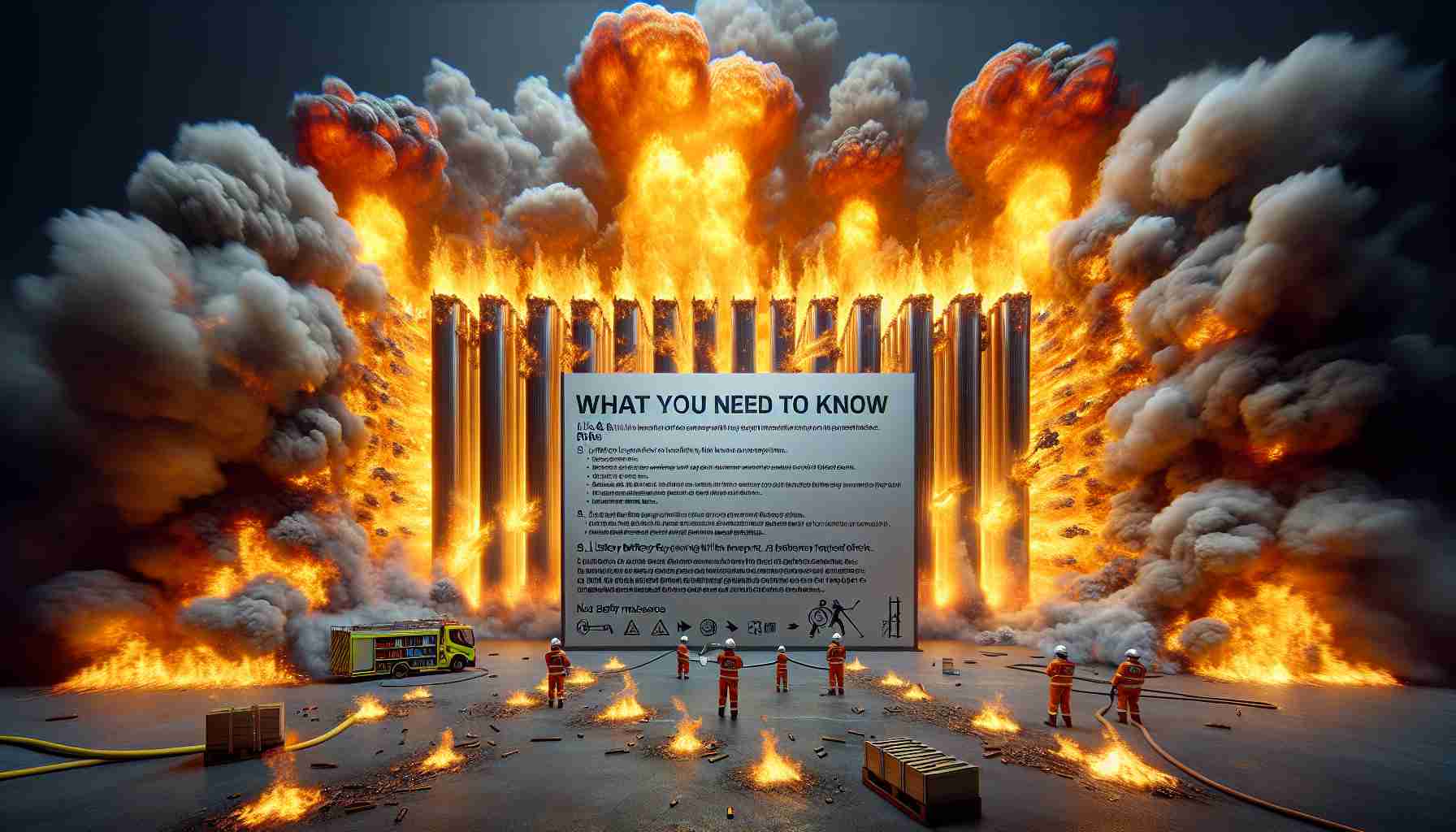- A massive fire at Vistra Energy’s lithium battery facility lasted four days, prompting the evacuation of 1,200 residents and raising serious safety concerns.
- Scientists found high levels of toxic metals in nearby soils, highlighting potential environmental impacts from lithium battery systems.
- Vistra Energy is investigating the failure of its fire suppression system during the blaze.
- Local and federal agencies assure there’s no immediate risk to the public, but calls for independent investigations are increasing.
- Stricter permitting protocols for future battery storage projects are being urged to enhance community safety.
- The incident underscores the need for improved emergency response and safety regulations in the renewable energy sector.
In a shocking turn of events, a massive fire erupted at Vistra Energy’s lithium battery storage facility in Moss Landing, California, on January 16, burning for an astonishing four days. This inferno, which shot flames 100 feet into the sky, forced the evacuation of 1,200 residents, closed Highway 1—an essential route to Big Sur—and sent toxic black smoke billowing over one of the richest agricultural regions in the world.
As the smoke cleared, safety questions lingered. Scientists reported dangerously high levels of toxic metals in nearby soils, raising concerns about the environmental impact of lithium battery systems. Vistra has launched an investigation, determined to uncover why their water-based fire suppression system failed during the emergency.
Despite assurances from local and federal agencies that there was no immediate risk to the public, the incident has prompted officials to call for thorough independent investigations. The state is being urged to implement stricter permitting protocols for future battery storage projects to ensure community safety amidst California’s ambitious goals for renewable energy.
Officials and community members are increasingly advocating for transparent emergency response measures and improved safety regulations. Assembly Member Dawn Addis even proposed legislation to shift permitting power from the state to local authorities.
This devastating fire at Moss Landing serves as a crucial wake-up call—illustrating the urgent need for enhanced safety measures in the renewable energy sector. As communities transition to cleaner energy sources, ensuring that these solutions are safe remains paramount.
Stay informed and engaged; our energy future depends on it!
Breaking News: The Moss Landing Fire Sparks Safety Overhaul in Renewable Energy Storage
Overview of the Incident
On January 16, a catastrophic fire erupted at Vistra Energy’s lithium battery storage facility in Moss Landing, California, causing significant destruction and danger. The fire raged for four days and shot flames towering 100 feet high, leading to the evacuation of approximately 1,200 residents and the closure of Highway 1, a critical access route to Big Sur. The incident not only disrupted lives but also raised serious environmental and safety concerns due to the toxic black smoke that affected one of California’s richest agricultural areas.
Environmental Impact and Investigations
Following the fire, scientists revealed troubling findings of dangerously high levels of toxic metals in the surrounding soils, igniting fears over the environmental impact of lithium battery systems. Amid this, Vistra Energy has initiated an internal investigation to understand the failure of their water-based fire suppression system, which was deemed critical during the crisis.
Market Analysis:
As a result of this incident, experts anticipate a shift in the battery storage market aimed at improving safety measures and regulatory practices. The need for enhanced oversight and technological improvements in fire suppression systems in battery storage facilities is likely to lead to increased costs but ultimately aims to safeguard communities and environments.
Legislative Response
In response to community concerns, Assembly Member Dawn Addis is advocating for legislation that would shift the power of permitting battery storage facilities from state to local authorities. This move is intended to improve community safety and ensure that local needs and risks are better addressed in the planning stages of such facilities.
Insights and Future Trends
– Safety Enhancements: There is likely to be a surge in technological innovations aimed at improving safety protocols and fire suppression systems in battery storage facilities.
– Stricter Regulations: Expect California to introduce more stringent permitting processes for renewable energy projects to ensure that community safety is prioritized in the transition to cleaner energy sources.
– Community Involvement: Increased advocacy for community input into energy project approvals may reshape how future renewable energy initiatives are rolled out.
Key Questions
1. What are the immediate health risks following the fire in Moss Landing?
Despite assurances from local and federal agencies regarding public health safety, elevated levels of toxic metals in the soil require ongoing monitoring and assessments by environmental health officials to understand the potential long-term effects on community health.
2. What changes are expected in regulations for battery storage facilities in California?
Following the Moss Landing incident, proposed legislation may lead to increased scrutiny and stricter regulatory frameworks for battery storage facilities, shifting the permitting process to local authorities to ensure a more community-focused approach.
3. How might this incident affect the future of renewable energy projects in California?
The fire may prompt a re-evaluation of safety protocols in the renewable energy sector, leading to increased investment in safer technologies and potentially reshaping public perception of lithium battery projects in California and beyond.
For more information on energy safety regulations and innovations, consider visiting California Energy Commission.
















